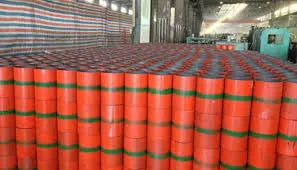- Afrikaans
- Albanian
- Amharic
- Arabic
- Armenian
- Azerbaijani
- Basque
- Belarusian
- Bengali
- Bosnian
- Bulgarian
- Catalan
- Cebuano
- Corsican
- Croatian
- Czech
- Danish
- Dutch
- English
- Esperanto
- Estonian
- Finnish
- French
- Frisian
- Galician
- Georgian
- German
- Greek
- Gujarati
- Haitian Creole
- hausa
- hawaiian
- Hebrew
- Hindi
- Miao
- Hungarian
- Icelandic
- igbo
- Indonesian
- irish
- Italian
- Japanese
- Javanese
- Kannada
- kazakh
- Khmer
- Rwandese
- Korean
- Kurdish
- Kyrgyz
- Lao
- Latin
- Latvian
- Lithuanian
- Luxembourgish
- Macedonian
- Malgashi
- Malay
- Malayalam
- Maltese
- Maori
- Marathi
- Mongolian
- Myanmar
- Nepali
- Norwegian
- Norwegian
- Occitan
- Pashto
- Persian
- Polish
- Portuguese
- Punjabi
- Romanian
- Russian
- Samoan
- Scottish Gaelic
- Serbian
- Sesotho
- Shona
- Sindhi
- Sinhala
- Slovak
- Slovenian
- Somali
- Spanish
- Sundanese
- Swahili
- Swedish
- Tagalog
- Tajik
- Tamil
- Tatar
- Telugu
- Thai
- Turkish
- Turkmen
- Ukrainian
- Urdu
- Uighur
- Uzbek
- Vietnamese
- Welsh
- Bantu
- Yiddish
- Yoruba
- Zulu
bull plug vs hex plug
Bull Plug vs. Hex Plug A Comparative Analysis
In the world of plumbing and piping, the choice of fittings can significantly impact efficiency, safety, and maintenance. Two common types of fittings are bull plugs and hex plugs. Understanding the differences between these two types, their applications, and advantages is essential for anyone involved in construction, plumbing, or maintenance.
What is a Bull Plug?
A bull plug, also known as a round plug, is a fitting that has a rounded top. It is used to seal the end of a pipe and is typically made from materials such as steel, brass, or plastic. The rounded shape of the bull plug allows for easy installation and removal, as there are no sharp edges. Bull plugs come in various sizes, and their design makes them suitable for applications where fluid dynamics are a concern, as they help to maintain smooth flow by minimizing turbulence at the end of the pipe.
What is a Hex Plug?
In contrast, a hex plug features a hexagonal shape that allows it to be tightened with a wrench. This design provides a secure and leak-proof seal when fitted onto the end of a pipe. Hex plugs are generally made from the same materials as bull plugs but are often preferred in high-pressure applications or where the connections might be subject to significant torque or force. The hexagonal shape makes them easier to grip and turn, which is an essential aspect when working in tight spaces or with heavy-duty piping systems.
Key Differences
bull plug vs hex plug

One of the most significant differences between bull plugs and hex plugs lies in their installation and removal process. Bull plugs can be installed and removed by hand, making them user-friendly for quick applications. However, they may not provide the same level of security in high-pressure situations compared to hex plugs. On the other hand, hex plugs require a tool for installation and removal, which can be seen as a drawback for some users but is perfect for ensuring a tight seal under high-pressure conditions.
Another notable difference is their applications. Bull plugs are commonly used in applications where ease of access and quick inspection is desired, such as in drainage systems or low-pressure water lines. Meanwhile, hex plugs are often utilized in gas lines or high-pressure water systems, where leaks can have dire consequences.
Advantages of Each Plug Type
The bull plug's primary advantage lies in its ease of use. It is straightforward to install and allows for quick inspections or maintenance without the need for specialized tools. This is particularly beneficial in domestic plumbing applications, where frequent access may be required.
Conversely, the hex plug's strength and reliability in high-pressure scenarios are its standout features. Its ability to withstand more torque makes it a preferred choice for industrial applications, where safety is paramount. Additionally, the hex shape can deter accidental loosening over time due to vibrations or shifts in the piping system.
Conclusion
Both bull plugs and hex plugs have their unique advantages and are suited for different applications. The choice between the two ultimately comes down to the specific requirements of the project at hand, including pressure levels, material considerations, and accessibility needed for maintenance. Understanding these differences allows plumbers, contractors, and DIY enthusiasts to make informed decisions, ensuring both safety and efficiency in their piping systems.
-
Tubing Pup Joints: Essential Components for Oil and Gas OperationsNewsJul.10,2025
-
Pup Joints: Essential Components for Reliable Drilling OperationsNewsJul.10,2025
-
Pipe Couplings: Connecting Your World EfficientlyNewsJul.10,2025
-
Mastering Oilfield Operations with Quality Tubing and CasingNewsJul.10,2025
-
High-Quality Casing Couplings for Every NeedNewsJul.10,2025
-
Boost Your Drilling Efficiency with Premium Crossover Tools & Seating NipplesNewsJul.10,2025







